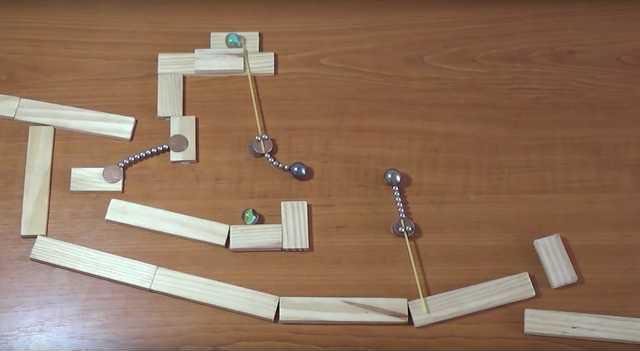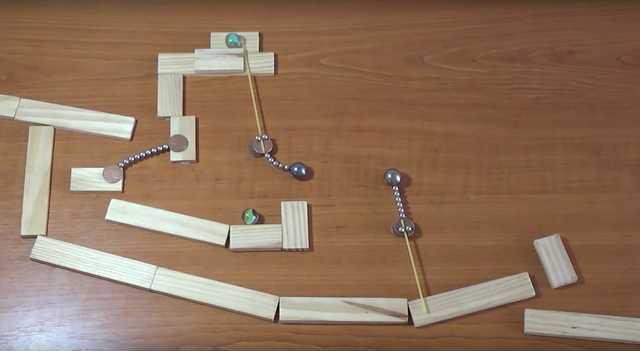This YouTube video has taken the game of dominoes to a new level.
In a 16-scene sequence consisting of interactions between small items like marbles, magnets, dominoes, Kapla blocks and dry spaghetti, a YouTuber who goes by the named Kaplamino achieved the goal of the video: to knock down a domino.
The Magnets and Marbles! video is about four minutes long and has more views than any other video on Kaplaminos channel.
Kaplaminos contraption is a Rube Goldberg machine. To be considered a Rube Goldberg machine, it must use a chain reaction to accomplish a very simple task in a very complicated manner, according to Wonderopolis.
Im lazy and perfectionist (sic), (and) with those two things its hard to finish a project, because I have this idea in my mind since three months maybe, and I work really hard for only four minutes at the end, Kaplamino wrote below the YouTube video. But trust me there is more work in this project than you can see in this video because of how many times I start from scratch.
Magnets and Marbles! was posted April 7 and had reached over 1.9 million views on YouTube by Wednesday.
Watch the video on YouTube here.
In a 16-scene sequence consisting of interactions between small items like marbles, magnets, dominoes, Kapla blocks and dry spaghetti, a YouTuber who goes by the named Kaplamino achieved the goal of the video: to knock down a domino.
The Magnets and Marbles! video is about four minutes long and has more views than any other video on Kaplaminos channel.
Kaplaminos contraption is a Rube Goldberg machine. To be considered a Rube Goldberg machine, it must use a chain reaction to accomplish a very simple task in a very complicated manner, according to Wonderopolis.
Im lazy and perfectionist (sic), (and) with those two things its hard to finish a project, because I have this idea in my mind since three months maybe, and I work really hard for only four minutes at the end, Kaplamino wrote below the YouTube video. But trust me there is more work in this project than you can see in this video because of how many times I start from scratch.
Magnets and Marbles! was posted April 7 and had reached over 1.9 million views on YouTube by Wednesday.
Watch the video on YouTube here.








